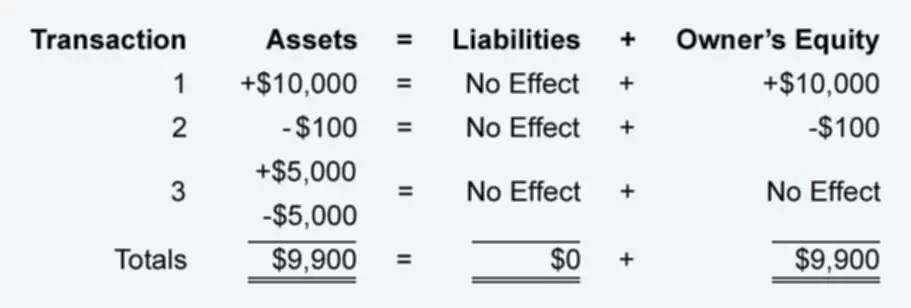Content

Once you have the unit cost, the rest of the statement if fairly straight forward. Last but not least, calculate the operating income by subtracting selling and administrative expenses from gross profit. The total production overhead absorbed, therefore, is $65 across the two departments. Despite these drawbacks, Absorption Costing is still a popular way to measure production costs.

The marginal costing calculates the contribution margin initially. As the COGS will be higher in this method, the absorption costing formula gross profits will be lower. Overhead absorption is the amount of indirect costs assigned to cost objects.
Which of the following is not included in absorption costing?
Variable costing is a different form of accounting for product and inventory costs. Absorption costing is used when management want to determine the full cost of one unit of output, including a proportion of the overheads. This process is known as absorption costing because a proportion of the fixed cost is absorbed into the product cost. Operational overhead must be allocated across all units produced during a period. If inventory consists of only one product, the unit cost is computed by dividing the sum of includable costs by the number of units produced.
Variable costs earn the name because they can increase and decrease as you make more or less of your product. The more units you sell, the more money you’ll make, but some of this money will need to pay for the production of more units. So, you’ll need to produce more units to actually turn a profit.
Absorption Cost Calculator
The absorption costing method is different from other costing methods as it considers fixed overhead costs along with variable costs while computing product cost. This method is also known as the full costing method as it considers all the costs while computing unit costs.
- The basic format is to simply show the sales less the cost of goods sold equal gross profit.
- All you have to do is calculate cost, decide how much profit you want, and then set your price.
- Selling and administrative expenses can be variable or fixed.
- Secondly, identify the material type required and then determine the amount required for the production of a unit of product to calculate the direct material cost per unit.
- The resulting conclusions can set in motion plans of action that bear directly on the overall fate of the organization.
It means that the vast majority of the work done within this department is carried out by the equipment. So, it’s that 20,000 that we’ll use as our budgeted level of activity when working out our overhead absorption rate. As any business owner knows, one of the critical ways to increase profitability is to lower your costs.
Problems | Disadvantages and Limitations with the Absorption Costing Approach:
The marginal costing method helps a company in key decisions such as operational efficiency and control measures. The absorption method allocates full production costs and offers accurate final pricing information. The fundamental difference between the two systems is one of timing.
Every production process has its related costs that are both direct and indirect. Combining variable and fixed costs, meanwhile, can help you calculate your break-even point— the point at which producing and selling goods is zeroed out by the combination of variable and fixed costs. For example, if you have 10 units of Product A at a variable cost of $60/unit, and 15 units of Product B at a variable cost of $30/unit, you have two different variable costs — $60 and $30. Your average variable cost crunches these two variable costs down to one manageable figure.
Absorption Costing Explained, With Pros and Cons and Example
Considerable business savvy is necessary, and there are several traps that must be avoided. First, a business must ultimately recover the fixed factory overhead and all other business costs; the total units sold must provide enough margin to accomplish this purpose. It would be easy to use up full manufacturing capacity, one sale at a time, and not build in enough margin to take care of all the other costs.
This method is useful when the manager wants to control the difference in the actual costs incurred and the standard costs. This method helps in calculating deviation and hence the control measures can be decided. Compute the selling price of a product using the absorption costing approach. In other words, under absorption costing, each unit of goods has a total production cost of just over $4. Let’s use the example from the absorption and variable costing post to create this income statement.
What is the absorption costing formula?
It appears that you can ignore demand and arrive at a price that will safely yield profit whatever profit you want. However, as noted above, the absorption costing approach relies on a forecast of unit sales. Neither the markup nor the unit product cost can be computed without such a forecast. The absorption costing approach essentially assumes https://quickbooks-payroll.org/ that the consumers need the forecasted sales and will pay whatever price the company decides to charge. If the price is too high, they can buy from a competitor or they may choose not to buy at all. Suppose, for example, that when Ritter Company sets its price at $30, it sells only 7,000 units rather than the 10,000 units forecasted.
The direct costing model takes all the fixed cost to the income statement immediately. The absorption costing model assigns the fixed cost to units produced during the period. In this type of costing system, only the direct costs or the varying costs are charged to the product. The direct costs may include direct labor cost, direct material cost and all the expenses that vary if the number of products varies. Work-in-process includes inventory items that have started, but not yet completed production at the end of the accounting cycle. It is common for companies to have several stages of production, and each stage requires an input of direct labor, direct material and operational overhead.
What Is Included in Direct Labor for GAAP?
What also happens is once we start the financial period, we use them to help us build up an estimate of what our production overheads are going to be. Now, what will happen is each period at the end of that period we’ll have to do a little reconciliation exercise. We’ll have to compare what we will call our total overheads absorbed to the actual overheads incurred, and there’s often a discrepancy here, which we call an over or under absorption.
- Next, determine which part of the manufacturing overhead is fixed in nature and divide the value by the number of units produced to arrive at a per-unit cost.
- If you like, at the moment what we have in our production overhead cost accounting for department A is $5,000 too high.
- In this case, the overhead absorbed exceeds the actual overheads by $5,000.
- The total variable and fixed manufacturing overhead ($) is found to be 321.
- These can include parts, cloth, and even food ingredients required to make your final product.
- Examples of variable manufacturing overhead are utility bills and supplies.
